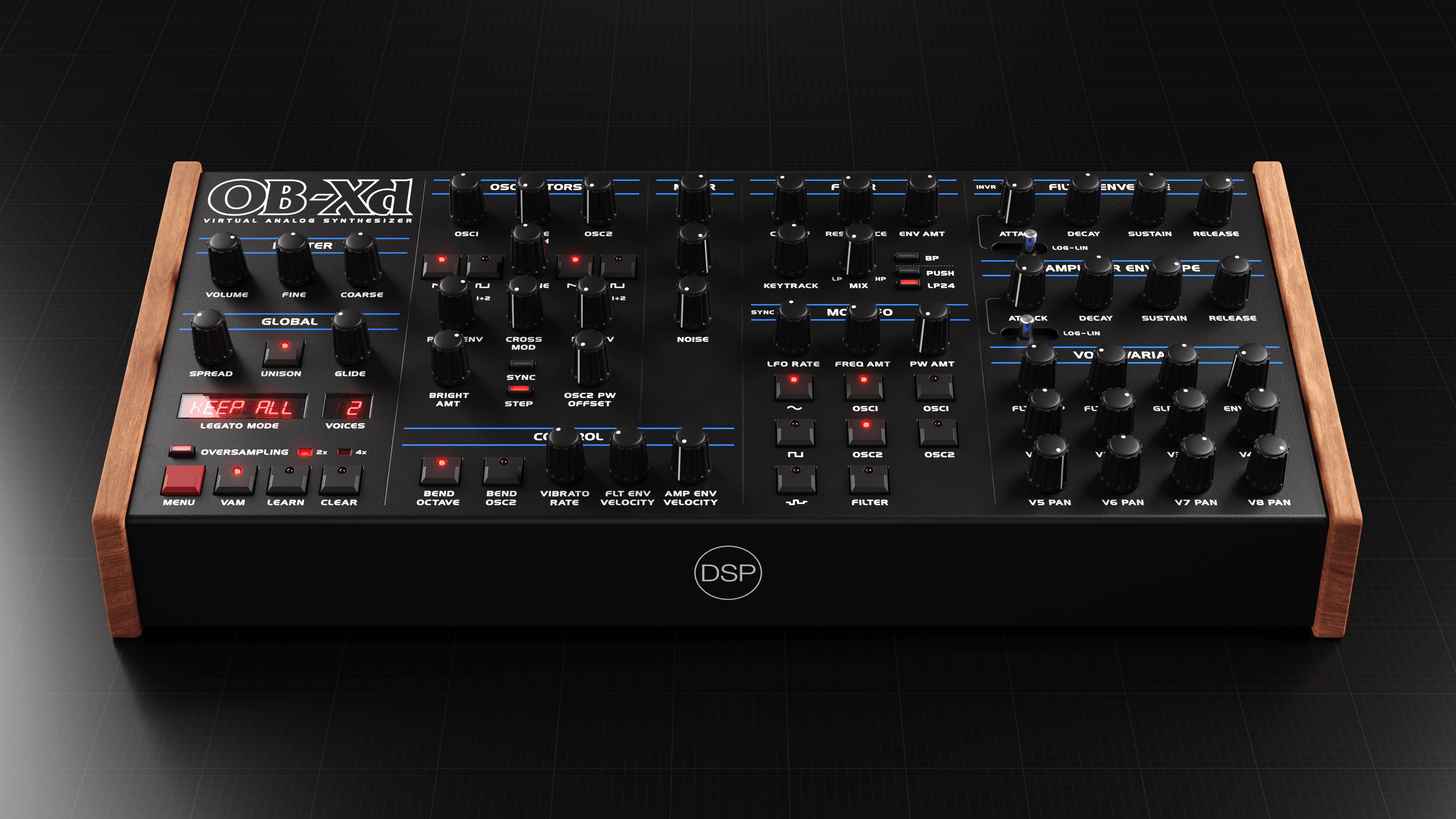DiscoDSP released OB-Xd – a free emulation synth of the Oberheim OB-X, OB-Xa and OB-8 synthesizers.
Oberheim OB-X Emulation Synth

From DiscoDSP:
The OB-Xd is based on the Oberheim OB-X. It attempts to recreate its sound and behaviours, but as the original was very limited in some important ways a number of things were added or altered to the original design. The OB-Xd was designed to sound as good and as rich as the original. It implements micro random detuning which is a big part of that sound. ... Like many synths of the OB-X’s generation, the OB-Xd has no internal effects so its sounds and textures can be greatly enhanced by the use of additional processing like chorus, reverb, delay, etc.
- The free OBXD plug-in does its best to recreate the rich pads and fat, punchy basses of those classic OB machines. It does not exactly copy them, but it's straightforward analog-style interface adds new elements like a continuous blendable multimode filter and optional velocity control over the filter envelope and amp envelope amounts.
- The FREE OBXD VST Reviewed by Waxadiscmusic on 01:08 Rating: 5 Tags free obx X free plug in X free vst X free vst for disco funk X house music vst X oberheim plug in X synth X the best plug ins.
VST host and re-established on project reload. LEARN: click on Learn, turn or activate the control you want to automate (touching is not enough), and then send the CC message you want to use for it; the LEARN LED will turn off and the controller will be assigned. CLEAR: to make an OB-Xd control forget its automation, enable CLEAR, turn.
OB-Xd Oscillators
From the manual:
A mixer was introduced to blend the two oscillators and noise source which is much more flexible than the fixed levels of the original design. In the OB-X cross modulation (Frequency Modulation), OSC2 modulated OSC1. On the OB-Xd this is reversed: OSC1 modulates OSC2. Sounds created by sync and x-mod this way were judged more useful than the inharmonic results of the original modulation path. The Step switch allows for precise tuning by semi-tone steps. Note that disengaging this doesn't keep the pitch at the precise semi-tone step but resumes gradual pitch adjustment. The Bright control adjusts the clarity of higher harmonics. Detune of OSC2 only adjusts up from the basic pitch (the original was bilateral).
OB-Xd Filters
From the manual:
The original OB-X had a single 12dB/octave low-pass filter. The OB-Xd significantly improves on this design: it implements a Multimode 12dB/ octave filter like the Oberheim SEM module. Using the MULTI rotary control, you can crossfade between low-pass behavior on the complete left, to either notch (by default) or bandpass (using the BP switch) behavior at 12 o'clock, and high- pass behavior on the far right. There is also a 24dB mode which is activated by the 24dB switch. This mode is only low-pass, but the MULTI control now allows you to smoothly change the depth of the filter slope from 24dB/octave on the complete left, down to 6 dB/octave on the complete right.
How to Install
You can run the .pkg installer or:
Drag Obxd.component into Library / Audio / Plug-Ins / Components.
Drag Obxd.vst into Library / Audio / Plug-Ins / VST.
To install the presets, drag the 'Datsounds' folder into ~/Library/Audio/Presets/.
Download
Download OB-Xd here.
(via synthopia)
When I wrote about the Obxd synthesizer back in June I noted that I was in the process of re-creating some of the presets from the Windows version. The presets are now available here, as a bank containing 27 presets that I like.


Obxd Free Vst
UPDATE 24 JANUARY 2015: I updated the bank to correct two presets (“BzBEL_5th Dimnsn -1” and “PWM Strings 1 IW”) that were noticeably flat in the previous version.
UPDATE 27 SEPTEMBER 2017: Link changed to Google Drive. Please ignore the error message regarding not being able to preview; just download the file.
To use, uncompress the download archive and copy the extracted obxd folder to ~/.lv2/. You can rename the folder if you already have an obxd folder at ~/.lv2/. The presets should now be available to Obxd.
How I Created the Bank
I auditioned several banks in the Windows version of Obxd and selected 27 presets to duplicate. I took screenshots of each of 27 presets and then reproduced each preset using the LV2 version of Obxd running within jalv.gtk. I saved each preset using the Save Preset… feature in jalv.gtk.
The final step was to combine the 27 presets into one preset bank. That process will be described in my next post.
Vst Free Download
Posted in Instruments